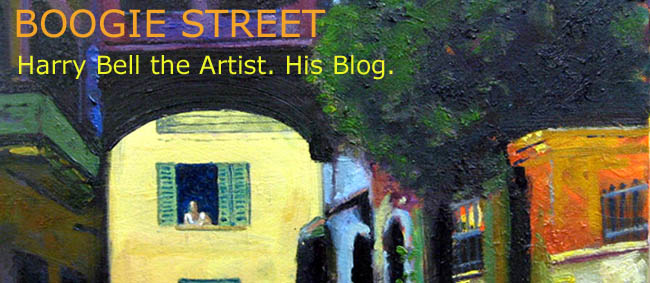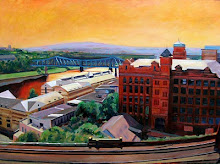On my second visit to Venice, I was acutely aware of the long history of artists who have painted the city, especially the great Turner, Monet and Sickert. The list of painters is so long that many are of the opinion that any original approach is by now impossible. My view, however, is that whether or not the subject has been painted a thousand times is irrelevant. It has never been painted through my eyes and one of the joys of art is that it enables us to see through another person’s eyes.
So I determined to relinquish any preconceptions and open myself up to the city. I let it present itself to me as I absorbed its atmosphere and waited to see how my own interests might be revealed, rather than those who have painted before me.
My main painting concerns over the years have been to do with the built environment and Venice amply provided subjects of architectural appeal, but what stirred my imagination was first of all the wonderful absence of cars and then the people, especially those travelling on vaporetti, the efficient and reliable water-buses of Venice.
I have previously painted pictures of staff in ticket offices at fun-fairs and there is something about the containment of people in boxes which interests me. It was something of that nature – metal boxes of people - that at first attracted me to the idea of passengers on the vaporetti. But as I examined the possibilities of the subject in my studio, I found a great deal more to explore.
First of all it allowed me to play with some interesting compositions. The picture plane could be flattened out and broken up into a series of horizontal bands of
buildings, water, roof, people, boat and more water. I also found it interesting to contrast the organic forms of the passengers with the more rectilinear forms of architecture and engineering. The people themselves began to fascinate me, as they accommodated themselves aboard the water-bus, sitting on rails, holding onto the ceiling to keep from falling over, kissing in the dark. And if it isn’t too fanciful, the way they were spread across the picture brought echoes of Italian frescoes to mind.
Saturday, 12 April 2008
Artist's Statement
I've written here before about the difficulties involved in writing the Artist's Statement, but this time - for the show at Darlington - I was determined to make it specifically relevant to the work in the show. This is what I wrote about The Vaporetto Series:
Subscribe to:
Post Comments (Atom)












6 comments:
Others have told me that it doesn't do to mention the influences by name, since one's mind will then wander to those famous artists.
Also, I was well reminded in my own recent efforts to drop the negative references, such as "impossible" and "irrelevant".
After these formal critiques, though, I have to say it spoke to me. But, I am an artist audience. Again, this series deserves acclaim.
Thanks, Casey. Interesting points which I'll duly consider. And I'm glad you found it readable - I hope that it speaks to non-artists, too, even if there are references which may not be immediately understood.
This non-artist enjoyed reading it very much. I like it when you succeed in wrestling words for descriptions like this.
I'm always pleased when a bout of literary wrestling pays off. It's the wrestling naked in mud I don't like.
Well, they do say you have to suffer for your art! (Whoever "they" are....)
"They?" "They" are the people who "know."
Post a Comment